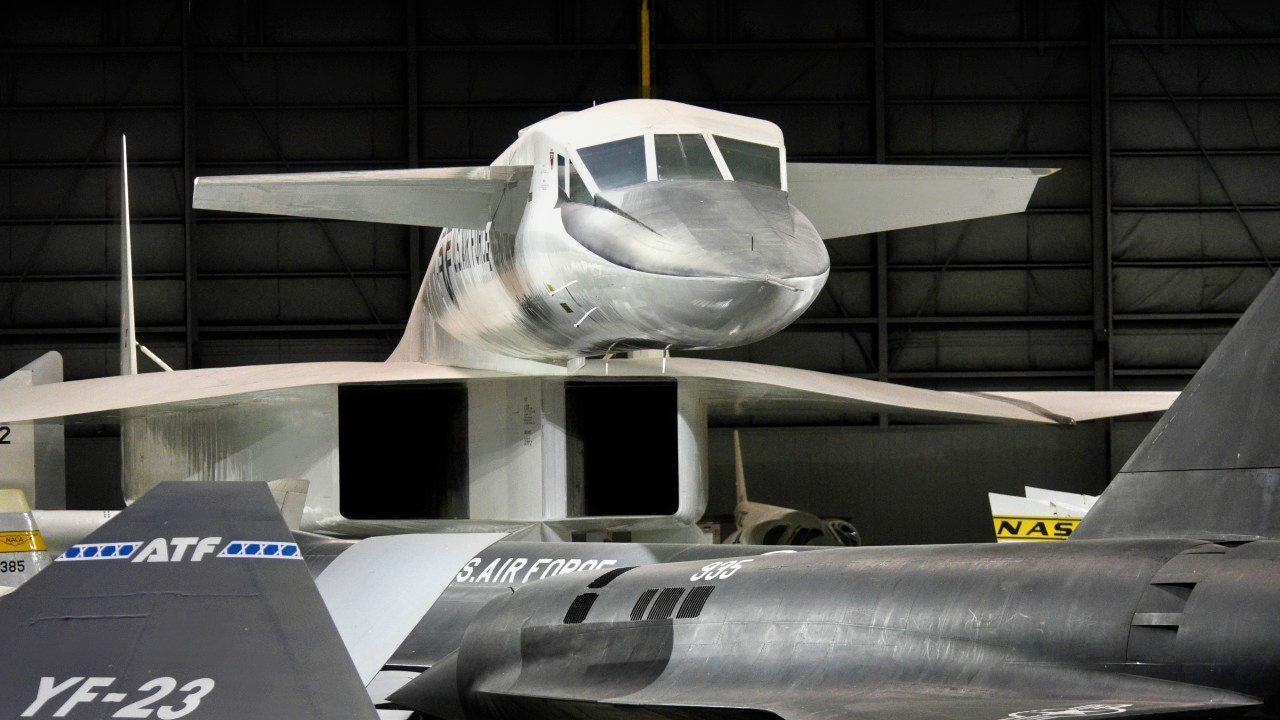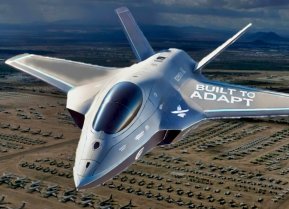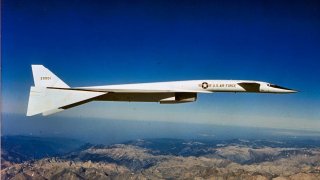XB-70 Valkyrie: The Mach 3 Bomber Built to Replace the B-52
The North American XB-70 Valkyrie was an ambitious supersonic bomber designed to replace the B-52, capable of flying at Mach 3 and 70,000 feet. With six powerful engines and a delta-wing design, it was meant to outfly Soviet interceptors and anti-aircraft defenses.
What You Need to Know: The North American XB-70 Valkyrie was an ambitious supersonic bomber designed to replace the B-52, capable of flying at Mach 3 and 70,000 feet. With six powerful engines and a delta-wing design, it was meant to outfly Soviet interceptors and anti-aircraft defenses.
However, as the utility of Intercontinental Ballistic Missiles (ICBMs) grew, the Valkyrie’s role diminished. Only two prototypes were built, and one was lost in a tragic collision. The program was ultimately canceled, serving as a reminder of the complexities of military innovation.
The remaining XB-70 resides at the National Museum of the United States Air Force.
In Norse mythology, the god Odin use da group of maidens to sift through the slain after battles. The maidens were charged with decided who amongst the slain were worthy of a place in Valhalla. The maidens were known collectively as Valkyrie.
Centuries later, when North American Aviation needed a name for their cutting-edge prototype, a strategic bomber capable of reaching supersonic speeds, they chose Valkyrie, in reference to Odin’s maidens.
The North American XB-70 Valkyrie was a unique bird with distinct features. With six engines and a delta-wing design, there was no mistaking the Valkyrie, which was billed as the future of strategic bombing
Yet, only two Valkyries were ever built, and the bomber, named for Odin’s maidens, endured not as a symbol of US air supremacy but as a cautionary tale to exercise budgetary discretion.
Designing the XB-70
The XB-70 prototype was meant to lead to the B-70. And get this: the B-70 was meant to replace the then-new B-52 Stratofortress. Obviously that didn’t happen, but that was the intention at the time.
The reason the USAF was intent on replacing the B-52 was because the lumbering bomber was vulnerable to Soviet intercept fighters and anti-aircraft guns. So, to reduce the risks of intercept fighters and anti-aircraft guns upon US strategic bombers, the US set out to develop an airframe that could fly higher than the enemy could reach and fly fast than the enemy could shoot.
“This approach, while simple in theory, created incredible engineering challenges that would lead to some of the most exotic, dynamic, and capable aircraft ever to take the skies,” Sandboxx reported.
Initially, the XB-70 designers employed what was known as the “brute force concept,” which conceived of carrying as much fuel as possible for long-range subsonic flights – and of using an aerodynamic shape that was crafted for high performance sprints.

Everything about the design was geared towards penetrating – and surviving – Soviet airspace.
The results of the brute force concept was a behemoth that relied upon external fuel tanks, which could be jettisoned once the fuel inside was consumed.
The external fuel tanks were both extremely expensive – and extremely large; each external fuel tank weighed 191,000 pounds.
To put that in perspective, consider that the B-47 Stratojet, an operational long-range bomber at the time the XB-70 was being designed, weighed approximately the same as just one of the proposed external fuel tanks that the XB-70 was meant to carry and jettison.
The external fuel tank plan was dismissed outright.
So, instead of relying on a external fuel tanks and subsonic flight, the designers revamped the XB-70 into a supersonic machine, capable of conducting missions at Mach 3, and 70,000 feet of altitude.
“In order to achieve and maintain these high speeds, their XB-70 was actually designed to “ride” on the shockwave it produced at supersonic speeds, using a delta-wing, slab-sides fuselage, and a large triangular intake on its belly, positioned well ahead of the bomber’s engines,” Sandboxx reported.
But the XB-70 wasn’t meant to be. Competing not just against other bombers, but against newly devised Intercontinental Ballistic Missiles and submarine-launched ballistic missile systems, the utility of the XB-70 wasn’t always clear.
President John F. Kennedy cut the Valkyrie program after just two prototypes had been built. One prototype was lost in a collision with an F-104 Starfighter during an aerial photo shoot.
The second XB-70 prototype resides at the National Museum of the United States Air Force at Wright Patterson Air Force Base.
About the Author: Harrison Kass
Harrison Kass is a defense writer with over 1,000 published articles. An attorney, pilot, guitarist, and minor pro hockey player, Harrison joined the US Air Force as a Pilot Trainee but was medically discharged. Harrison holds a BA from Lake Forest College, a JD from the University of Oregon, and an MA from New York University. Harrison listens to Dokken.
Image Credit: Creative Commons.


